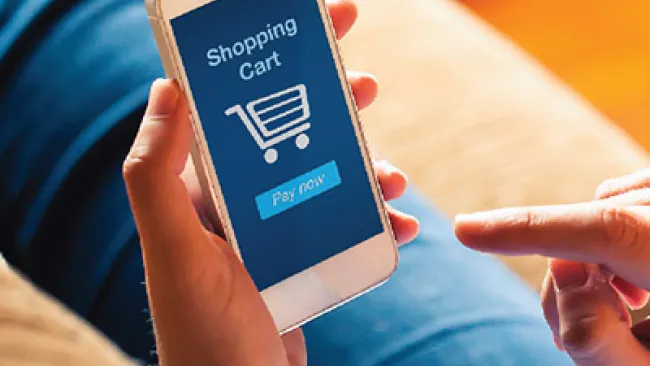Customers live on their phones, but not in the same ways they used to. Prior to COVID-19, chat and messaging capabilities catered to users always on the go, then it played a vital role in servicing those who were mostly homebound and needed essential services from groceries to healthcare.
Chat and messaging both play an important role in servicing your customers, but these services are not identical, and we see opportunities for innovation in the latter. Let’s explore their differences and how they can best assist users.
What is chat?
Chat is a dedicated interaction session that pops up on a brand’s website and/or mobile app. In most cases it’s an artificially intelligent virtual agent that greets you in the corner of the screen with the option to continue the conversation with the AI or transfer to an agent.
Chat serves an important purpose in the omnichannel ecosystem, but it’s not without its limits. These platforms often keep the customer glued to one channel. Users typically wait for the window to open for the agent to respond, and if anyone closes the window, the session is cancelled with the interaction history lost. Information is not saved on the customer side and may or may not be saved on the agent’s side.
What is messaging?
Messaging is a text-based, one-to-one conversation that usually occurs on a mobile device or platform like Facebook Messenger, WhatsApp, SMS text messaging, or within an app. Unlike web-based chat that occurs in a pop-up screen where both parties must be logged in, messaging is asynchronous, meaning the customer doesn’t need to stay in a session to send or receive messages.
Messaging takes the idea of web chat and moves it to where consumers already spend their time – on SMS, in apps, or on third-party communications platforms like Facebook, Snapchat, or Apple Business Chat. Messaging is convenient, provides context, and allows conversations to be more personal with emojis, gifs, and links to information.
Create effortless experiences anywhere, anytime
Customers want service that is quick and personalised. Chat and messaging capabilities both have the capabilities to serve these needs, but businesses need to understand where it’s appropriate to deploy each channel.
To learn where chat and messaging will be most effective, explore these resources today:
Remote CX + Messaging = A Perfect Pair: Learn how to combine messaging and remote operations to deliver amazing and effortless experiences.
Conversational Messaging: Why Customers Demand it (and How to Deliver it): Here’s everything companies need to know to make conversational messaging an integral part of their customer experience.
How Messaging Improves Call Volume Spikes Now and Creates Better Long-term Experiences: CX experts from TTEC and LivePerson explained how messaging and intelligent automation enable companies to do exactly that while maximising resources.
Telecom Seamlessly Scales Apple Business Chat Support: How TTEC helped a global telecommunications service provider expand its messaging services, including support for Apple Business Chat.















